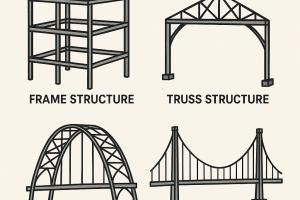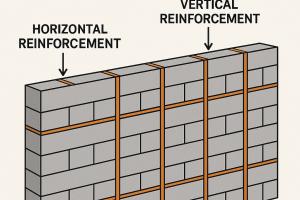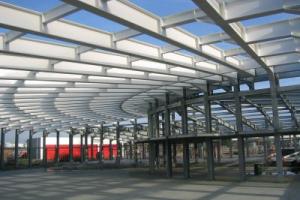Types of Bolt Connections in Steel Structures
Types of Bolt Connections in Steel Structures
Bolt connections are widely used in steel structures to join structural members together and transfer loads. There are different types of bolt connections based on the behavior of the connected members and the way the bolts are loaded. Two common types of bolt connections are slip-critical connections and bearing type connections.
Slip Critical Connections:
Slip-critical connections are designed to resist relative movement or slip between the connected members. These connections are typically used in situations where preventing any slip or movement between the members is critical to the structural performance, such as in tension members or structures subjected to dynamic loads.
Slip-critical connections are recommended for joints subjected to stress reversal, severe stress fluctuation, impact, vibration or where slip is objectionable
In slip-critical connections, high-strength bolts are used, and they are tightened to a specified tension using calibrated wrenches or other appropriate methods. The frictional force between the connected surfaces, created by the tension in the bolts, resists the potential for slip. The design of slip-critical connections considers factors such as the surface condition of the connected members, the number and size of bolts, and the specified bolt tension.
Bearing Type Connections:
Bearing type connections are designed to transfer loads through direct contact and bearing between the connected members. These connections are commonly used in compression members, where the load is transferred by the compression force between the bearing surfaces of the connected members.
Load is transferred by shearing and bearing on the bolt. Capacity in shear depends on whether shear plane intersects the body of bolt or threaded portion.
In bearing type connections, the bolts primarily serve to hold the connected members in place, rather than directly carrying the load. The bolts are typically snug-tightened, which means they are tightened to bring the connected members into full contact without applying a specific tension. The load is then transferred through the direct bearing contact between the surfaces of the connected members.
The design of bearing type connections considers factors such as the size and thickness of the connected members, the number and size of bolts, and the load-carrying capacity of the bearing surfaces. Adequate bearing area is essential to prevent excessive stress concentrations and ensure the integrity of the connection.
In both slip-critical and bearing type connections, the proper selection of bolts, their installation, and the quality control measures are crucial to ensure the strength and reliability of the connection. The design of bolt connections also takes into account factors such as load transfer, safety factors, serviceability requirements, and relevant design codes and standards.
In summary, slip-critical connections are designed to resist slip or relative movement between connected members, while bearing type connections transfer loads through direct contact and bearing between the members. The choice between these connection types depends on the specific structural requirements and the expected behavior of the connection under loads.





